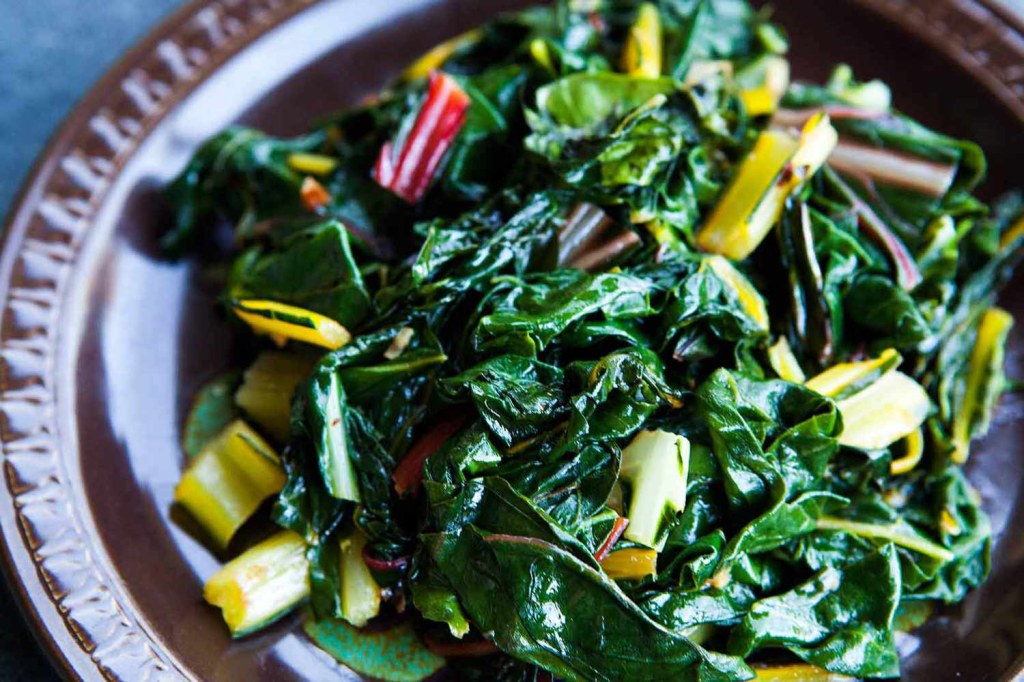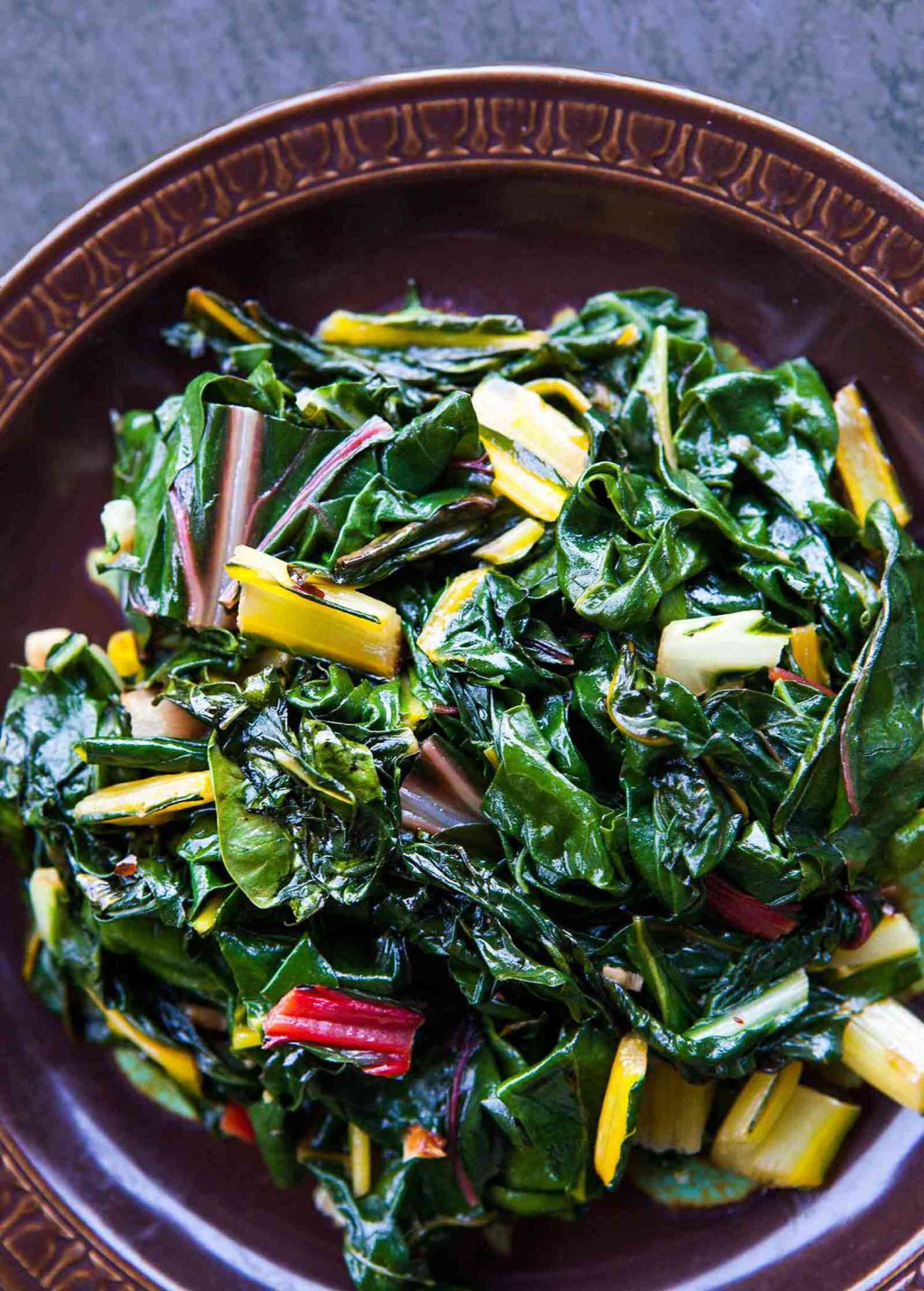Discover The Perfect Boiling Time For Swiss Chard: How Long To Boil Swiss Chard For Ultimate Deliciousness!
How Long to Boil Swiss Chard?
Introduction
Dear Swiss Enthusiast,
2 Picture Gallery: Discover The Perfect Boiling Time For Swiss Chard: How Long To Boil Swiss Chard For Ultimate Deliciousness!


Welcome to our informative article on how long to boil Swiss chard! If you’re a fan of this leafy green vegetable and want to learn the best boiling techniques, you’ve come to the right place. In this article, we will provide you with detailed instructions on how long to boil Swiss chard to achieve the perfect texture and flavor. So, let’s dive in and discover the secrets to cooking this nutritious and delicious vegetable!
What is Swiss Chard?

Image Source: simplyrecipes.com
Swiss chard, scientifically known as Beta vulgaris subsp. cicla, is a leafy green vegetable that belongs to the same family as beets and spinach. It is native to the Mediterranean region and is widely cultivated for its vibrant-colored stems and dark green leaves. Swiss chard is packed with essential nutrients like vitamins A, C, and K, as well as minerals like iron and magnesium, making it a popular choice for health-conscious individuals.
Who Should Boil Swiss Chard?
Swiss chard can be enjoyed by anyone looking to incorporate nutrient-rich greens into their diet. Whether you are a vegetarian, vegan, or simply a health-conscious individual, boiling Swiss chard is a great way to prepare it. The boiling process helps to soften the leaves and stems, making them easier to digest while maintaining their nutritional value. So, if you’re looking for a versatile and nutritious vegetable to add to your meals, Swiss chard is a fantastic choice!
When is the Best Time to Boil Swiss Chard?

Image Source: simplyrecipes.com
Swiss chard is a cool-season vegetable that thrives in mild temperatures. It is typically harvested from late spring through early fall, depending on your location. To enjoy the freshest Swiss chard, it’s best to boil it shortly after harvesting. However, if you don’t have access to freshly harvested Swiss chard, you can still find it in supermarkets year-round. Just ensure you choose firm and vibrant-looking bunches for the best quality.
Where to Buy Swiss Chard?
Swiss chard is readily available in most grocery stores and farmers markets. You can find it in the produce section, often bundled together with other leafy greens. When selecting Swiss chard, look for crisp, unwilted leaves and stems. The leaves should be vibrant green without any signs of yellowing or browning. If you prefer organic produce, check for the organic certification label on the packaging or ask your local farmer for organically grown Swiss chard.
Why Should You Boil Swiss Chard?
Boiling Swiss chard is a popular cooking method as it helps to soften its fibrous texture and mellow out its slightly bitter taste. The boiling process also retains the vegetable’s nutritional value, making it an excellent choice for health-conscious individuals. Additionally, boiling Swiss chard allows you to infuse it with flavors by adding herbs, spices, or seasonings to the cooking water. This versatile cooking method opens up a world of possibilities for creating delicious and nutritious dishes with Swiss chard.
How to Boil Swiss Chard?
Now that we’ve covered the basics, let’s get into the details of how to boil Swiss chard. Follow these simple steps for a perfectly cooked batch:
Start by washing the Swiss chard thoroughly under cold running water to remove any dirt or debris.
Trim off the tough ends of the stems and discard any damaged or discolored leaves.
Fill a large pot with water and bring it to a rolling boil.
Add a generous amount of salt to the boiling water to enhance the flavor of the Swiss chard.
Gently add the Swiss chard to the boiling water and let it cook for approximately 3 to 5 minutes.
Check the tenderness of the stems and leaves by piercing them with a fork. They should be tender but still slightly crisp.
Once cooked to your desired tenderness, remove the Swiss chard from the boiling water and transfer it to a colander.
Quickly rinse the Swiss chard under cold running water to stop the cooking process and preserve its vibrant color.
Drain the Swiss chard well and pat it dry using a clean kitchen towel or paper towels.
Advantages and Disadvantages of Boiling Swiss Chard
Like any cooking method, boiling Swiss chard has its pros and cons. Here are some advantages and disadvantages to consider:
Advantages:
Boiling Swiss chard helps to soften its fibrous texture, making it easier to chew and digest.
The boiling process retains the vegetable’s nutritional value, ensuring you get all the essential vitamins and minerals.
Boiled Swiss chard can be easily seasoned with herbs, spices, or seasonings added to the cooking water, enhancing its flavor.
It is a simple and straightforward cooking method that doesn’t require any special equipment or techniques.
Boiled Swiss chard can be used in various dishes, such as soups, stews, pasta, or enjoyed as a side dish.
Disadvantages:
Boiling Swiss chard for too long can cause it to become mushy and lose its vibrant color.
The boiling process may lead to some loss of water-soluble vitamins, such as vitamin C and B vitamins.
Overcooking Swiss chard can result in a bland taste, so it’s important to monitor the cooking time carefully.
Frequently Asked Questions (FAQ)
1. Can I freeze boiled Swiss chard?
Yes, you can freeze boiled Swiss chard. After boiling, quickly cool the Swiss chard in ice water, drain it well, and pack it into airtight containers or freezer bags. Frozen boiled Swiss chard can be stored for up to 3 months and used in various dishes.
2. Can I reuse the boiling water for other purposes?
Yes, you can reuse the boiling water for other purposes, such as cooking pasta or vegetables. Just make sure to strain the water to remove any debris from the Swiss chard before using it again.
3. Can I boil Swiss chard with other vegetables?
Absolutely! Boiling Swiss chard with other vegetables is a great way to create a nutritious medley. Just adjust the cooking time based on the tenderness of the vegetables you’re combining. Start with the firmer vegetables and add the Swiss chard later to ensure all the vegetables are cooked evenly.
4. Can I use the boiled water as a broth?
Yes, the water used to boil Swiss chard can be used as a simple vegetable broth. You can season it with salt, pepper, and other herbs or spices to enhance its flavor. Use it as a base for soups, stews, or as a cooking liquid for grains or legumes.
5. Can I eat Swiss chard raw?
While Swiss chard is often cooked, it can also be enjoyed raw. Young, tender leaves can be added to salads for a delicious crunch. However, keep in mind that raw Swiss chard has a slightly bitter taste, so it’s best to pair it with flavorful dressings or other ingredients.
Conclusion
Now that you know how long to boil Swiss chard and the various aspects related to the cooking process, it’s time to get into the kitchen and start experimenting! Boiling Swiss chard is a fantastic way to create nutritious and flavorful dishes that everyone will love. Remember to pay attention to the cooking time, so you achieve the perfect balance between tenderness and texture. Enjoy your culinary adventures with Swiss chard and savor the incredible benefits it brings to your health!
Final Remarks
Disclaimer: The contents of this article are for informational purposes only and do not constitute medical or dietary advice. It is always recommended to consult with a qualified healthcare professional or nutritionist before making any changes to your diet.
This post topic: Swiss



